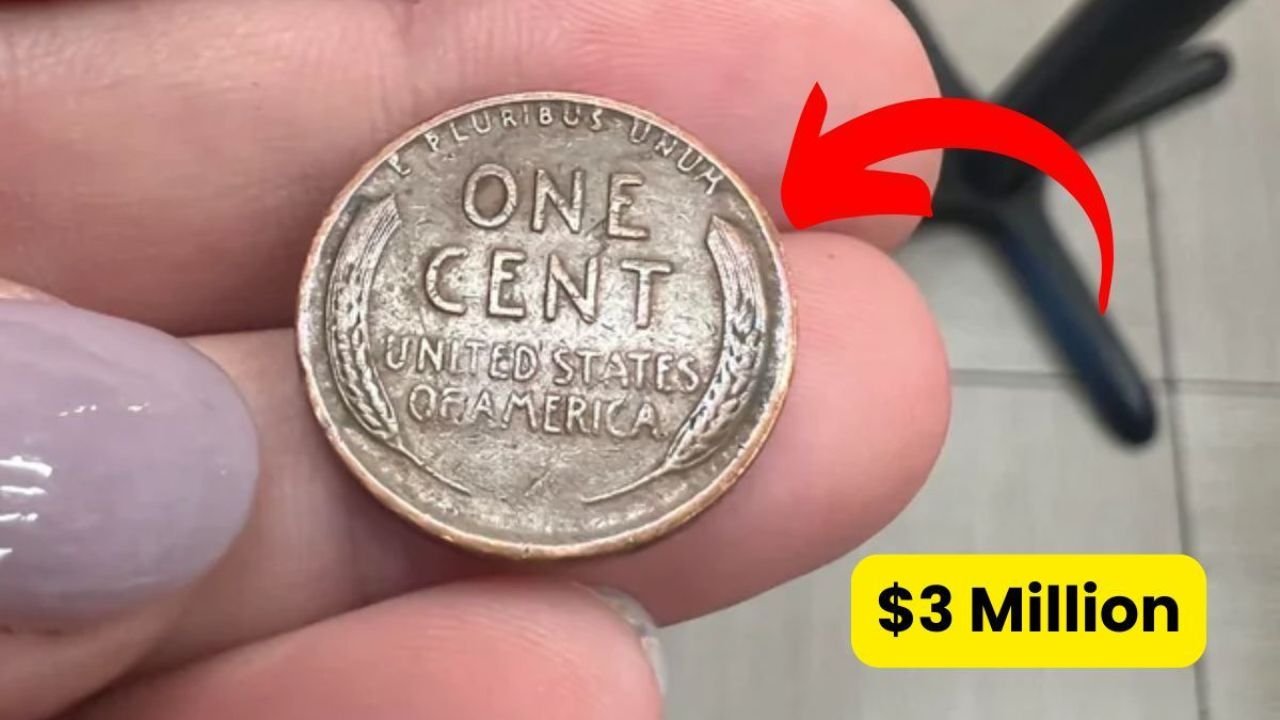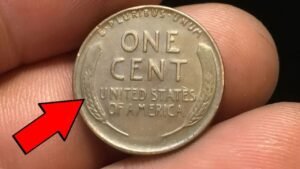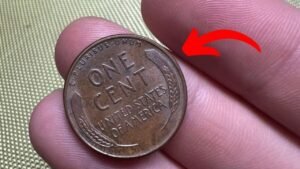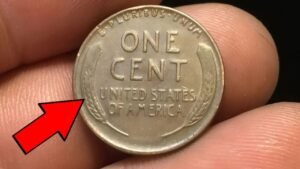Imagine reaching into your pocket for spare change and pulling out a penny worth $3 million. It sounds like a fantasy, but for collectors of the Lincoln Wheat Penny, this dream could be a reality. Minted from 1909 to 1958, these unassuming copper coins have become treasures in the world of numismatics, with some rare specimens fetching life-changing sums at auctions. But here’s the kicker: some of these valuable pennies might still be hiding in circulation, waiting to be discovered in your coin jar or pocket change. In this blog post, we’ll dive into the fascinating story of the Lincoln Wheat Penny, explore why certain versions are worth millions, and share tips on how you can spot one. Ready to start your treasure hunt? Let’s go!
The History Behind the Lincoln Wheat Penny
A Revolutionary Coin Design
In 1909, the U.S. Mint made history by introducing the Lincoln Wheat Penny, the first American coin to feature a real person—President Abraham Lincoln—rather than symbolic figures like Lady Liberty. Designed by sculptor Victor David Brenner to commemorate Lincoln’s 100th birthday, the coin’s obverse showcases Lincoln’s dignified profile, while the reverse displays two wheat stalks framing the words “ONE CENT” and “UNITED STATES OF AMERICA.” This iconic design, often called the “Wheat Cent,” ran for nearly half a century until it was replaced by the Lincoln Memorial design in 1958.
Why It’s a Collector’s Favorite
The Lincoln Wheat Penny isn’t just a piece of currency; it’s a snapshot of American history. Circulating through the Great Depression, two world wars, and the post-war boom, these coins carry stories of the people who used them. From factory workers to schoolchildren, countless hands touched these pennies, making them tangible links to the past. For collectors, the combination of historical significance, artistic design, and the thrill of finding a rare gem makes the Wheat Penny a beloved collectible.
What Makes a Lincoln Wheat Penny Worth $3 Million?
The Role of Rarity and Minting Errors
Not every Lincoln Wheat Penny is worth millions—most are valued at just a few cents above face value. So, what transforms an ordinary penny into a numismatic jackpot? It comes down to three key factors: rarity, condition, and minting errors. The most famous example is the 1943 Bronze Penny, a wartime error coin that’s at the heart of the $3 million valuation. During World War II, copper was critical for military supplies, so the U.S. Mint switched to zinc-coated steel for pennies in 1943. However, a few copper planchets (coin blanks) from 1942 were accidentally used, creating a handful of bronze pennies stamped with the 1943 date. Only about 20 of these are known to exist, making them incredibly rare.
Condition Matters
The condition of a coin, or its grade, is crucial in determining its value. Coins in “uncirculated” condition—showing no wear and retaining their original luster—command the highest prices. For instance, a 1943 Bronze Penny in mint-state condition (graded MS-64) sold for $1.7 million in 2010 and is now valued at up to $3.3 million in pristine condition. Even slight wear can drastically reduce a coin’s value, so collectors prize pennies that look as fresh as the day they were minted.
Mint Marks and Key Dates
Mint marks—small letters indicating where a coin was produced—also play a big role. Pennies from the San Francisco (“S”) or Denver (“D”) mints are often rarer than those from Philadelphia (which have no mint mark). Key dates like 1909-S VDB, 1914-D, 1922 No D, and 1955 Double Die are highly sought after. For example, the 1909-S VDB penny, featuring Brenner’s initials on the reverse, had a low mintage of 484,000, making it worth $700 to $50,000 depending on condition.
The Legendary 1943 Bronze Penny: A $3 Million Treasure
A Wartime Mistake Worth Millions
The 1943 Bronze Penny is the crown jewel of Lincoln Wheat Pennies. During the switch to steel pennies in 1943, a few copper planchets were mistakenly fed into the presses at the Philadelphia, Denver, and San Francisco mints. These rare coins, weighing 3.11 grams (compared to 2.7 grams for steel pennies), are now numismatic legends. In 2010, a 1943 Philadelphia Bronze Cent sold for $1.7 million, and recent estimates suggest a top-grade specimen could fetch $3 million or more.
Real-Life Discoveries
The allure of the 1943 Bronze Penny lies in its potential to be found in everyday life. In 1947, a teenager named Don Lutes found one in his change after buying lunch at his high school cafeteria. Decades later, after his death, the coin was auctioned for $204,000 in 2019, with proceeds donated to his local library. Stories like this fuel the excitement of coin collectors and casual treasure hunters alike, proving that life-changing finds are possible.
How to Spot a Valuable Lincoln Wheat Penny
Step 1: Check the Date and Mint Mark
Start by examining the date on the penny. Key years to look for include 1909, 1914, 1922, 1943, 1944, and 1955. Next, check for a mint mark under the date. An “S” or “D” can indicate a rarer coin, while the absence of a mint mark means it was minted in Philadelphia. For example, a 1914-D penny is extremely rare, with only 1.2 million produced, and can be worth up to $159,000 in mint condition.
Step 2: Perform the Magnet Test
For 1943 pennies, a simple magnet test can be a game-changer. Steel pennies will stick to a magnet, but the rare bronze versions won’t. If you have a 1943 penny that doesn’t stick and has a copper hue, it could be a candidate for the $3 million club. Be cautious, though—counterfeits exist, so professional authentication is a must.
Step 3: Look for Errors
Minting errors like double dies (where the design appears doubled) or missing mint marks can skyrocket a penny’s value. The 1955 Double Die Penny, for instance, shows a distinct doubling of the date and lettering, making it worth $50,000 or more in good condition. The 1922 No D penny, caused by worn dies at the Denver Mint, can fetch $5,000 to $40,000.
Step 4: Assess Condition
Check the coin’s condition carefully. Look for sharp details, minimal wear, and original luster. If the penny looks worn or damaged, its value will likely be lower. Never clean a coin, as this can reduce its worth significantly. Instead, store it in a protective holder and seek professional grading from services like PCGS or NGC.
Most Valuable Lincoln Wheat Pennies
| Year | Variety | Estimated Value | Key Features |
|---|---|---|---|
| 1943 | Bronze Penny | Up to $3.3M | Copper color, doesn’t stick to magnet, rare error |
| 1909-S | VDB | $1,000–$100,000 | Designer’s initials on reverse, low mintage |
| 1955 | Double Die | $50,000–$100,000 | Distinct doubling of date and lettering |
| 1914-D | Standard | Up to $159,000 | Low mintage, Denver mint mark |
| 1922 | No D | $5,000–$40,000 | Missing Denver mint mark due to worn dies |
Tips for Starting Your Coin Collecting Journey
Start Small and Learn
You don’t need to find a $3 million penny to enjoy coin collecting. Begin with common Wheat Pennies, which can often be bought for a few cents above face value. Check rolls of pennies from banks or dig through old family collections. As you learn, focus on key dates and varieties, and invest in a good magnifying glass to spot errors.
Join the Numismatic Community
Connect with other collectors through local coin clubs, online forums, or events like coin shows. Resources like the American Numismatic Association (ANA) can help you find reputable dealers and learn about grading and authentication. Building knowledge and relationships in the numismatic community will make your collecting journey more rewarding.
Authenticate Before You Celebrate
If you think you’ve found a valuable penny, resist the urge to clean or handle it excessively. Contact a professional grading service like PCGS or NGC for authentication. These experts can confirm whether your coin is genuine and assign it a grade, which significantly impacts its market value.
Why the Lincoln Wheat Penny Captivates Us
Beyond their potential for massive financial gain, Lincoln Wheat Pennies tell a story of resilience and history. These coins were used during some of America’s most transformative moments, from the Roaring Twenties to the hardships of the Great Depression and the sacrifices of World War II. Each penny is a tiny time capsule, connecting us to the past in a way few objects can. The possibility that a multi-million-dollar treasure could be hiding in your change jar adds an element of adventure to everyday life.
FAQ: Your Questions About the Lincoln Wheat Penny Answered
Q: How can I tell if my 1943 penny is the rare bronze version?
A: Check the date and color. A 1943 penny should be steel-gray and stick to a magnet. If it’s copper-colored and doesn’t stick, it could be the rare bronze version. Weigh it—bronze pennies are 3.11 grams, while steel ones are 2.7 grams. Get it authenticated by PCGS or NGC.
Q: Are all Lincoln Wheat Pennies valuable?
A: No, most are worth only a few cents above face value. Only specific years, mint marks, and errors (like 1943 Bronze or 1955 Double Die) command high prices. Condition also matters greatly.
Q: Can I still find these pennies in circulation?
A: It’s rare but possible. Some 1943 Bronze Pennies and other valuable varieties have been found in pocket change or old collections. Check bank rolls, coin jars, or inherited coins.
Q: Where can I sell a valuable penny?
A: After authentication, sell through reputable auction houses, coin dealers, or online platforms like Heritage Auctions. The ANA’s dealer directory can help you find trusted buyers.
Conclusion: Start Your Treasure Hunt Today
The Lincoln Wheat Penny is more than just a coin—it’s a piece of American history with the potential to change lives. Whether you’re a seasoned collector or someone who’s never given pennies a second thought, the idea that a $3 million treasure could be hiding in plain sight is thrilling. So, the next time you get change at the grocery store or clean out an old drawer, take a closer look at those pennies. You might just find a small copper coin that’s worth a fortune. Happy hunting!




